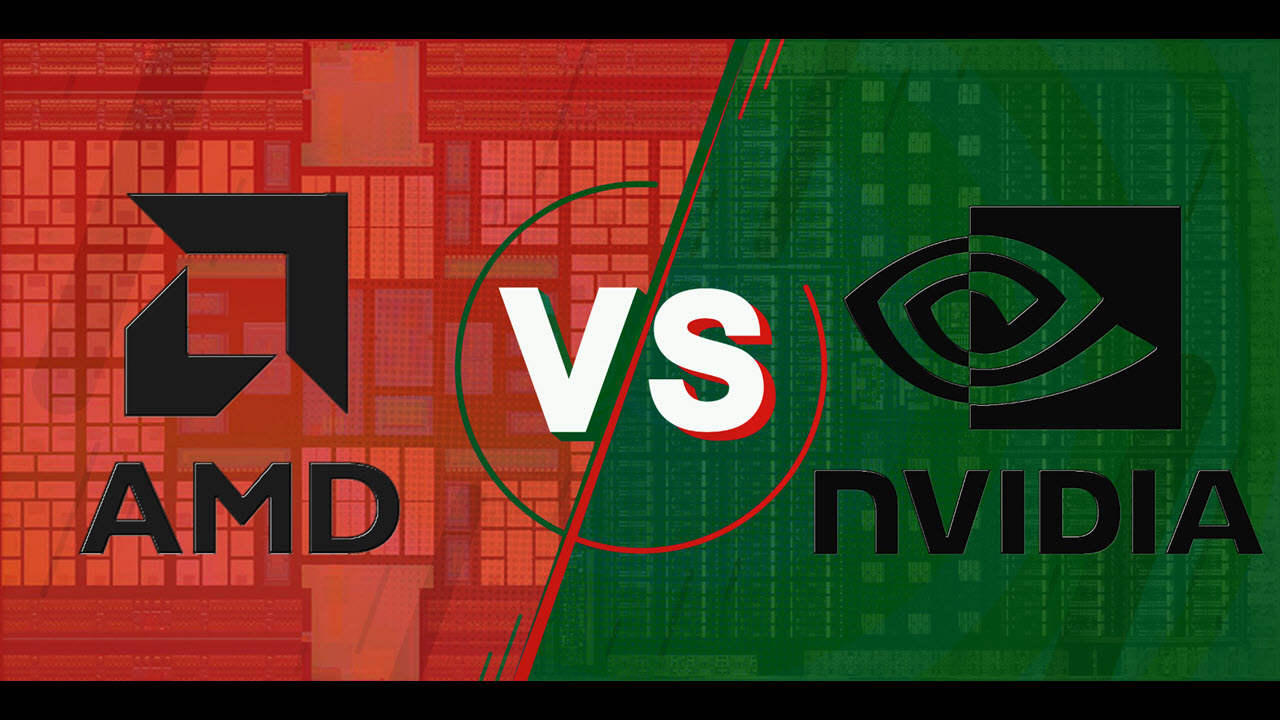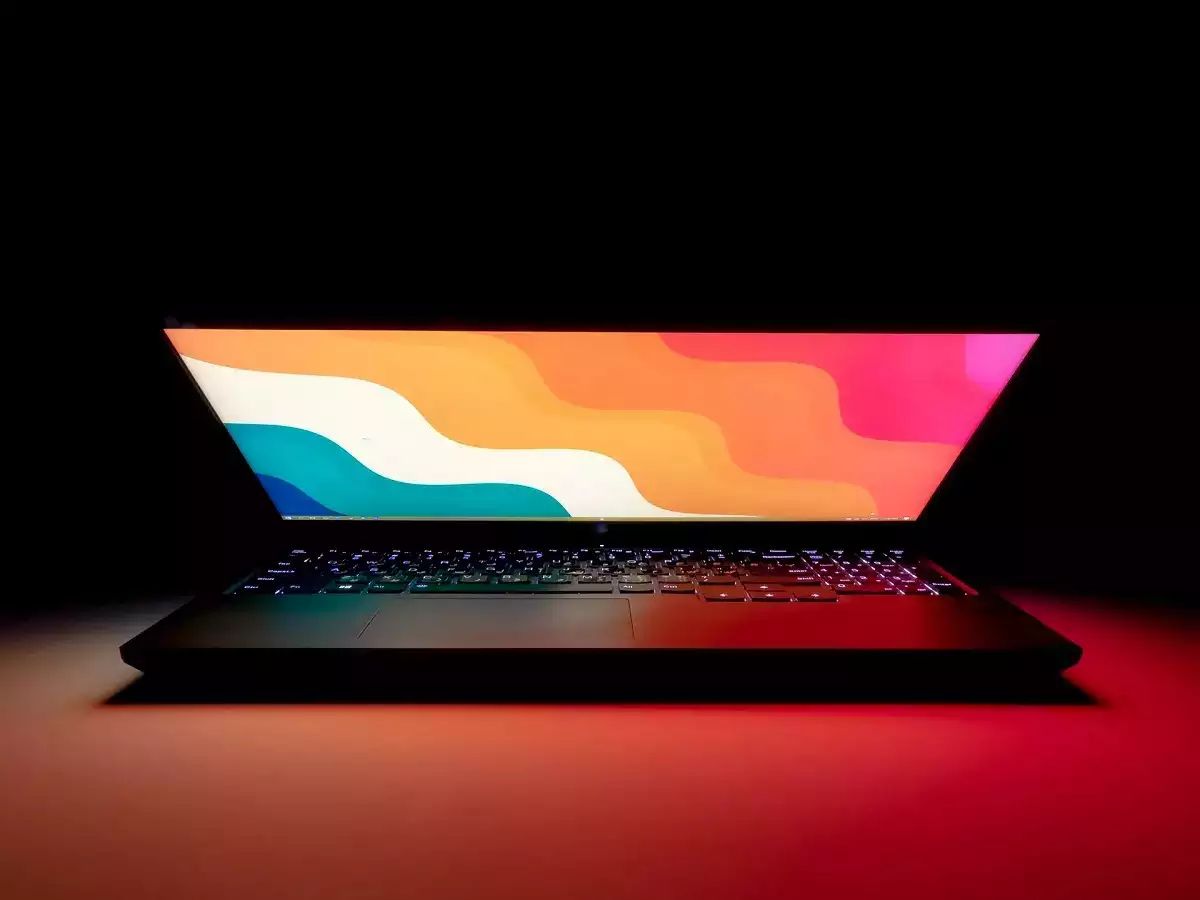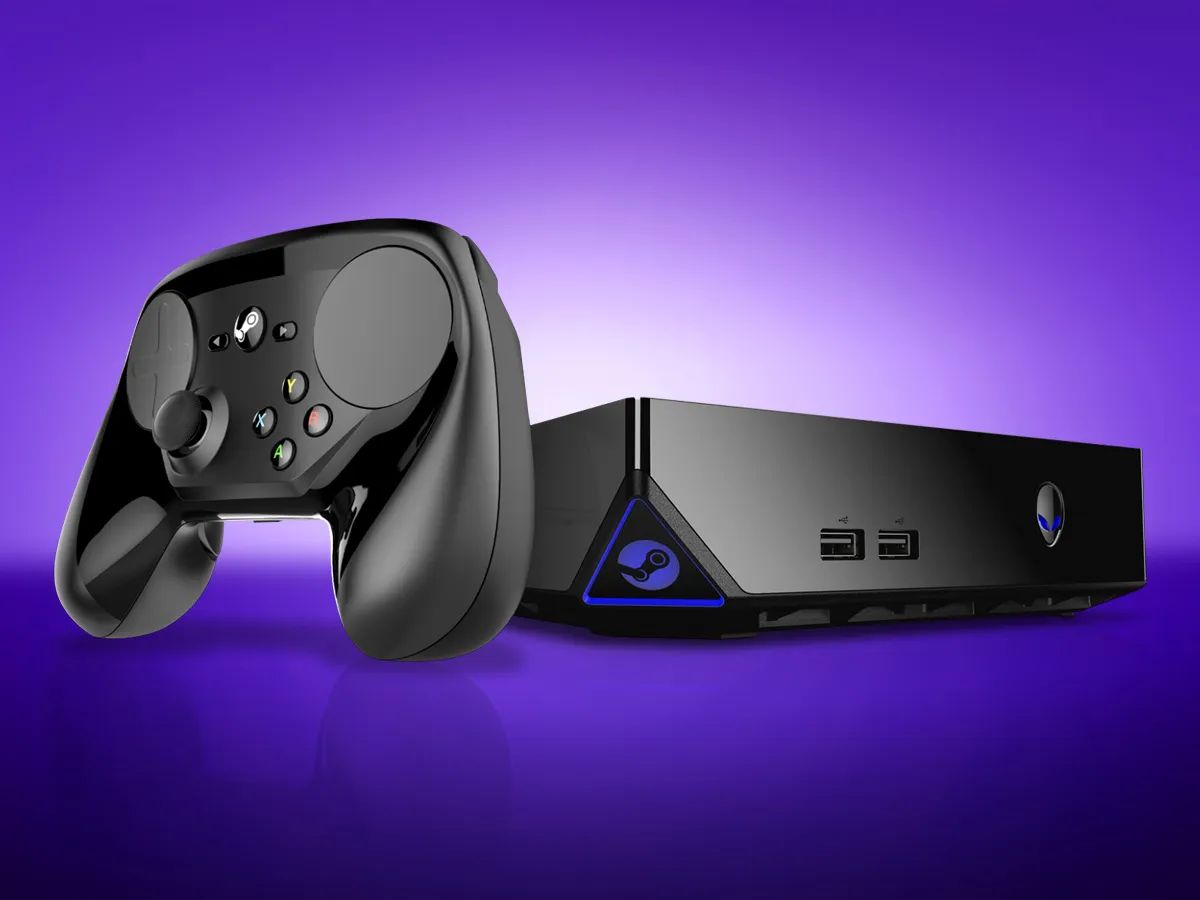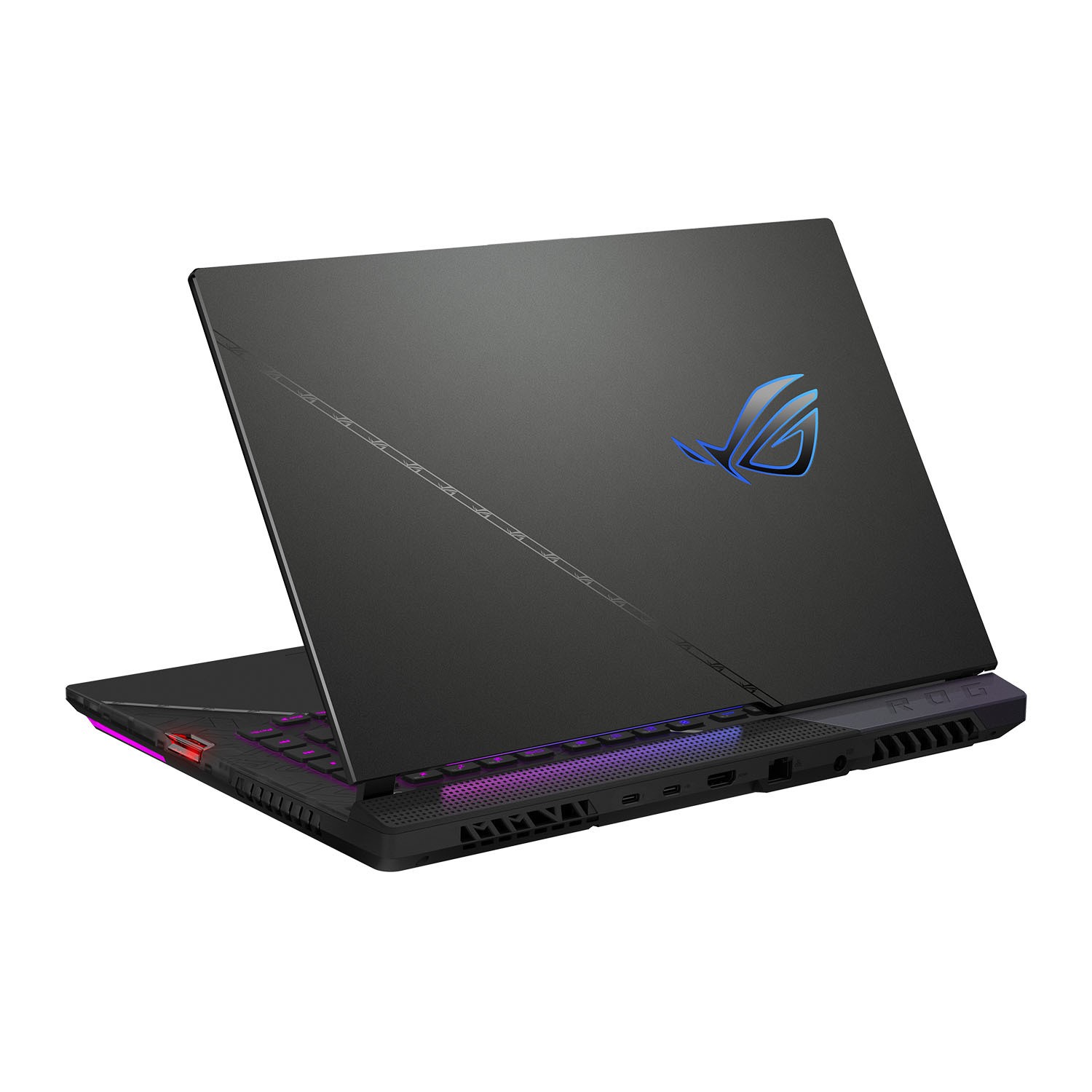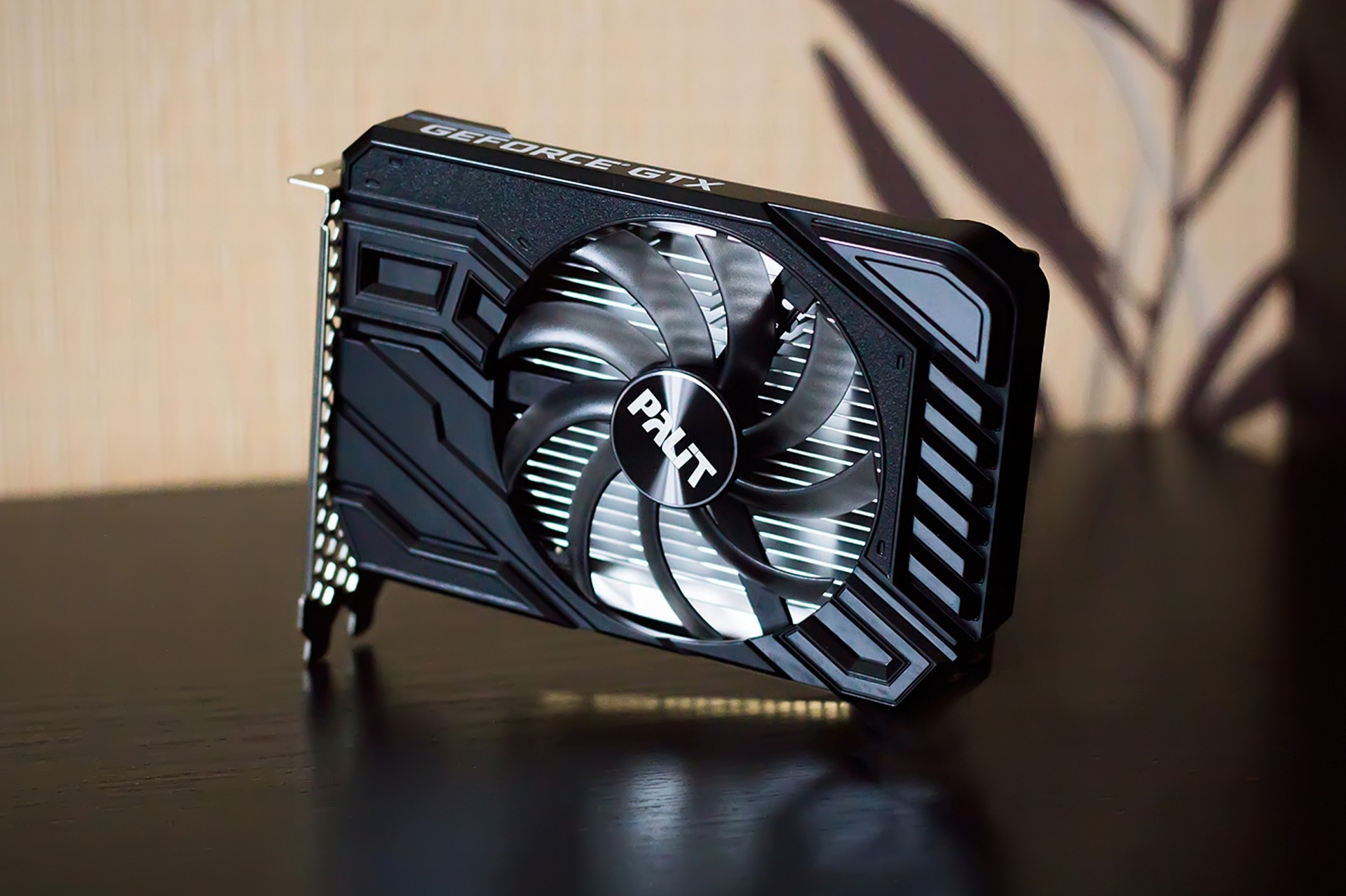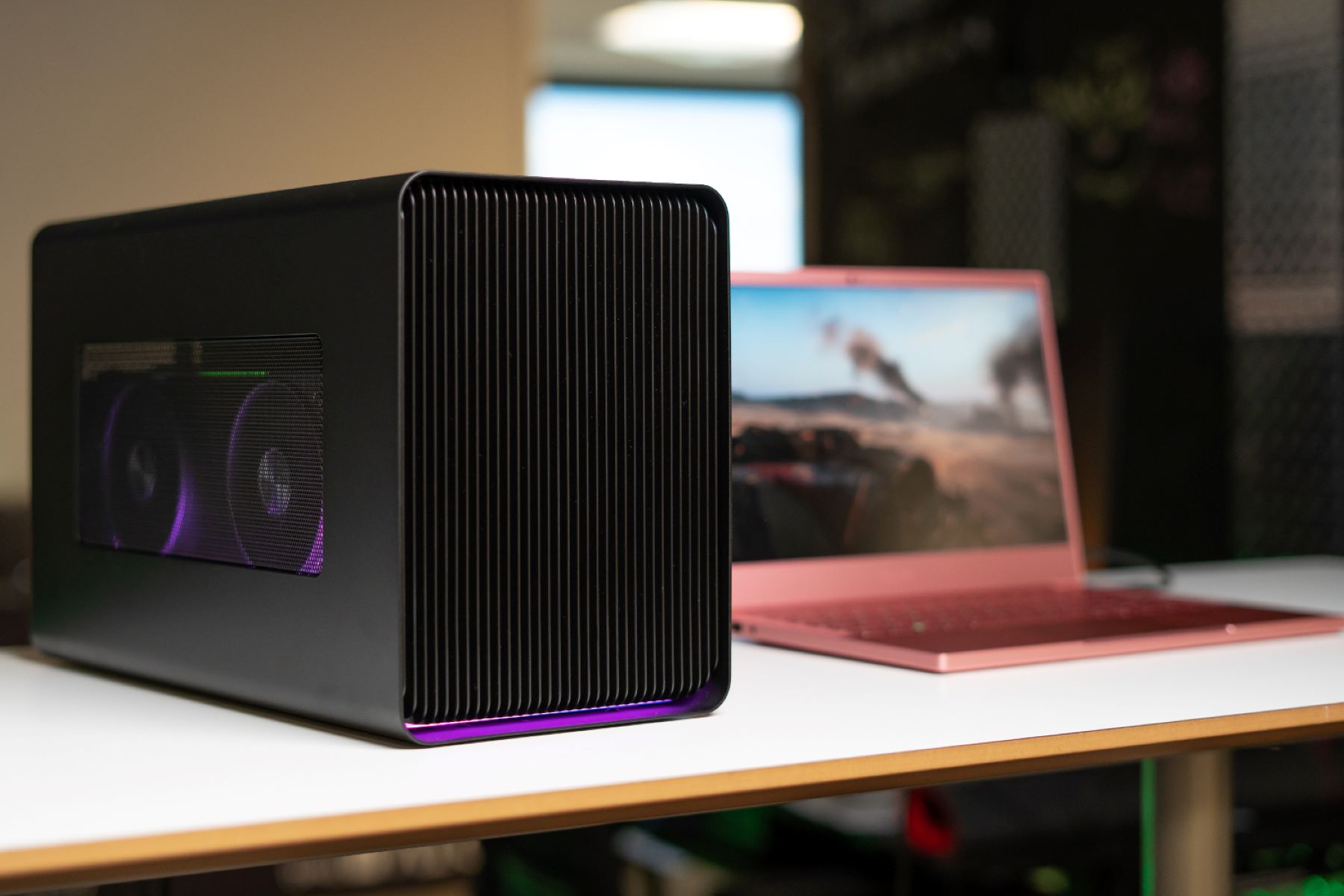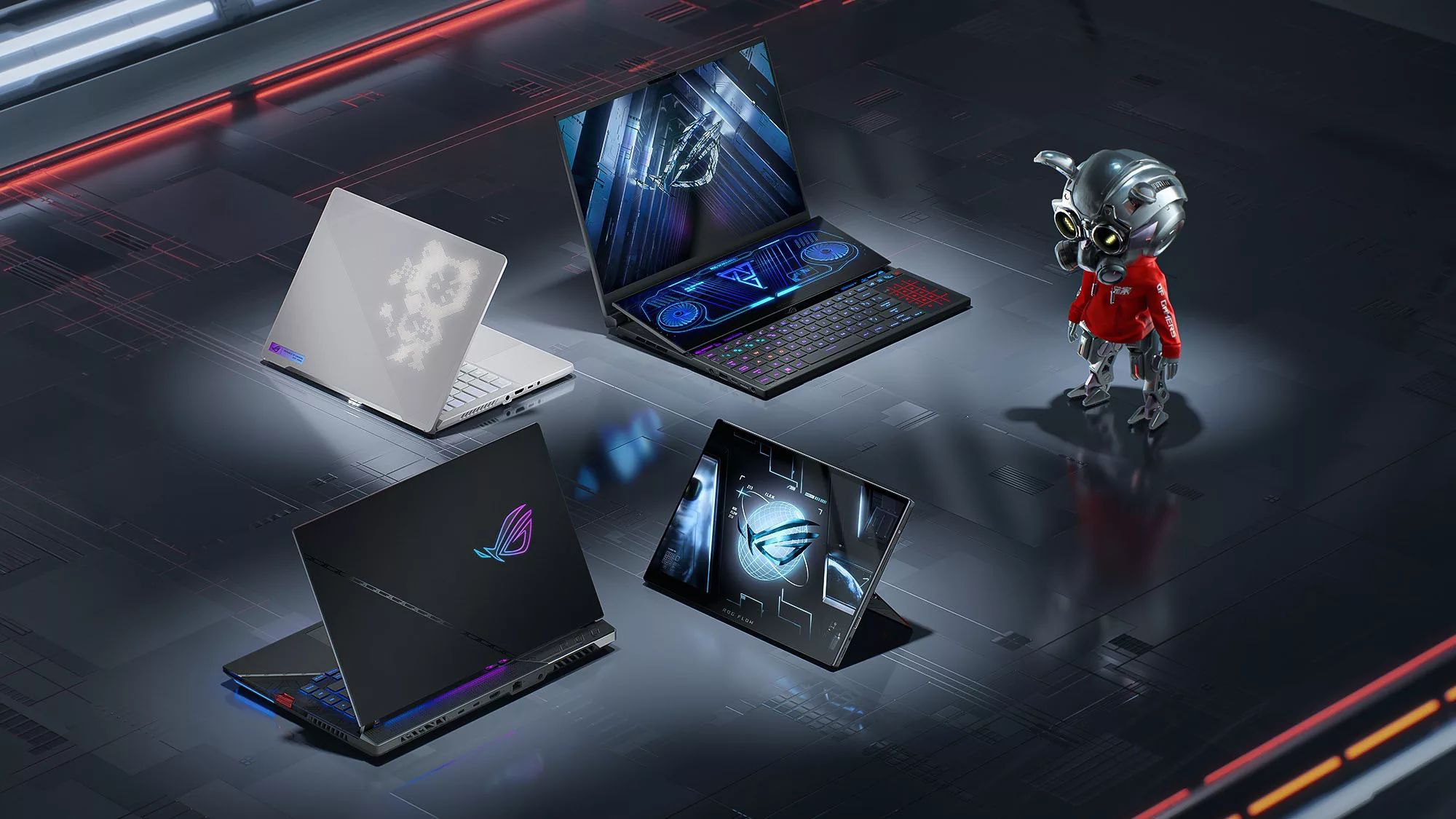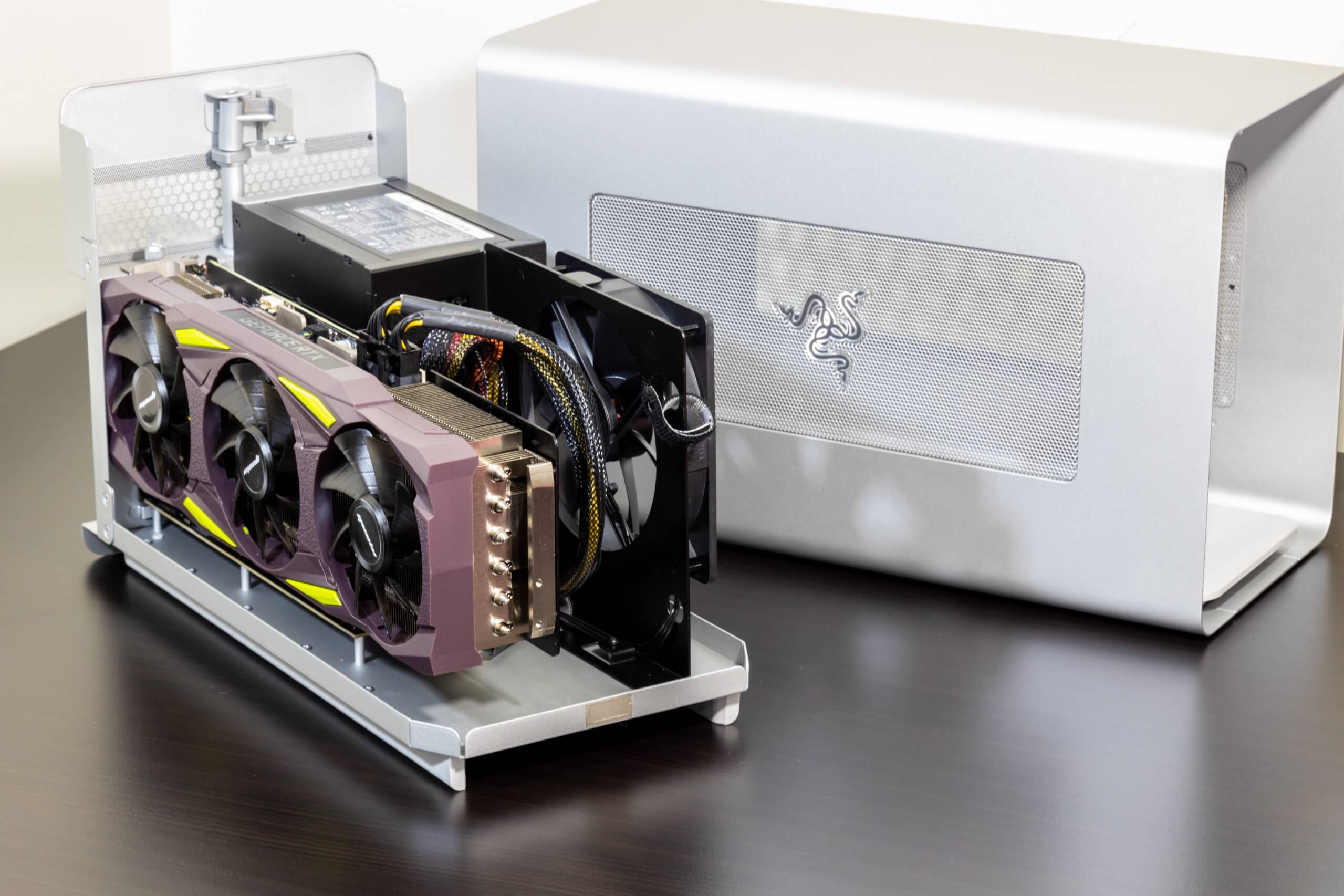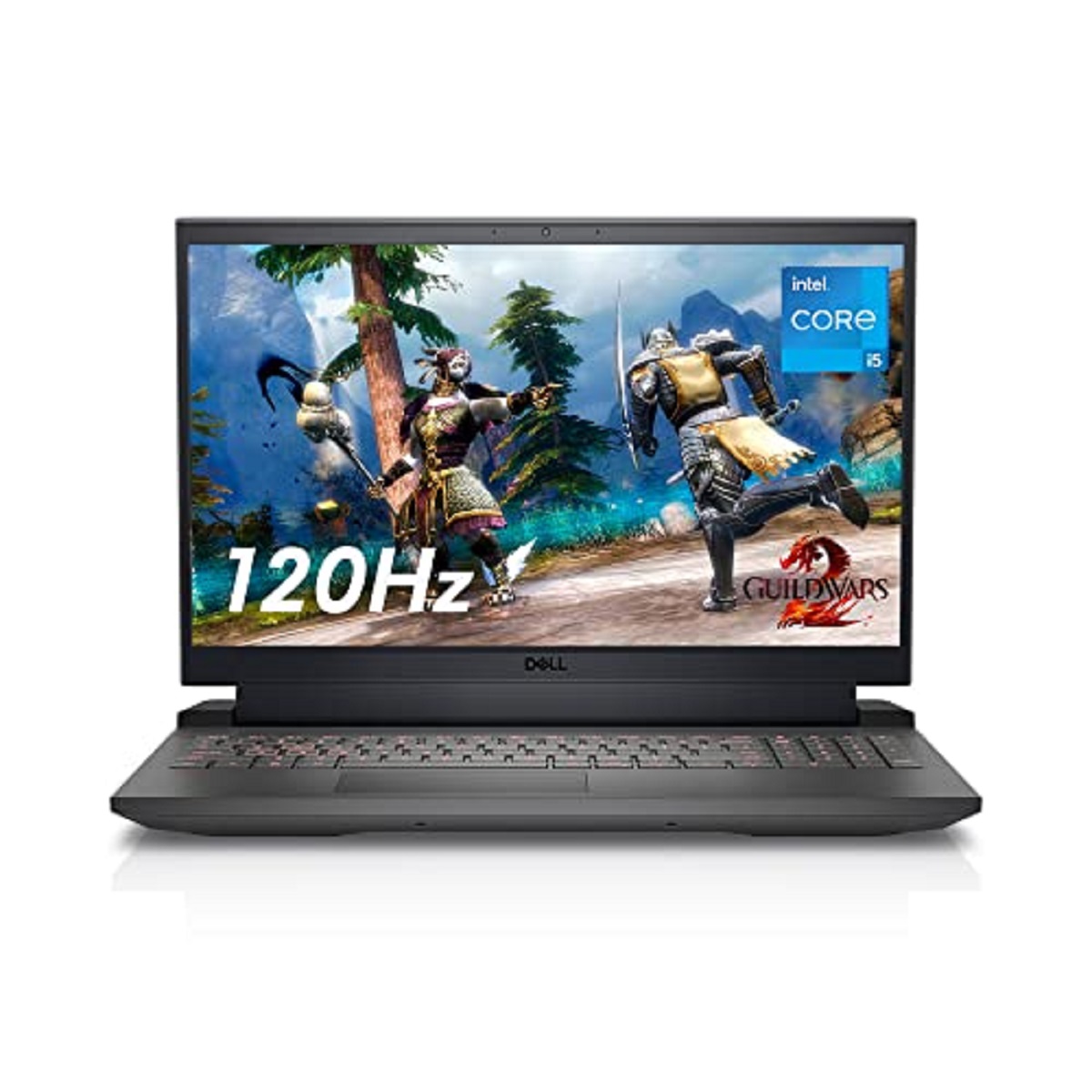Introduction
Welcome to the world of high-performance gaming and graphic design! If you’re considering a switch from an AMD GPU to an Nvidia GPU, you’re in for an exciting journey. Nvidia GPUs are renowned for their exceptional performance, advanced features, and reliable driver support. Whether you’re upgrading your gaming rig or looking to enhance your content creation capabilities, switching to an Nvidia GPU can be a game-changer.
Before you dive into the process of switching your GPU, it’s essential to understand the technical considerations involved. Switching from one GPU brand to another requires careful planning and execution. In this article, we’ll guide you step-by-step through the process of switching from an AMD GPU to an Nvidia GPU.
Switching your GPU involves several critical steps, including preparing your PC, uninstalling the AMD drivers, physically replacing the GPU, installing Nvidia drivers, and configuring the new GPU. We’ll cover each of these steps in detail, ensuring you have a smooth transition to your new Nvidia GPU.
Please note that the instructions provided in this guide assume you have a basic understanding of computer hardware and software installation. If you’re unsure or unfamiliar with any steps, it’s recommended to seek professional assistance or consult the documentation provided with your hardware.
So, without further ado, let’s get started on the journey of switching from an AMD GPU to an Nvidia GPU. By the end of this guide, you’ll be set up with your new Nvidia powerhouse and ready to experience the best that modern gaming and graphic design have to offer.
Technical Considerations Before Switching
Before you venture into switching your GPU from AMD to Nvidia, there are a few important technical considerations to keep in mind. These considerations will help ensure a seamless transition and prevent any compatibility issues. Let’s take a closer look at these considerations:
1. Compatibility: Check and verify that your motherboard supports the Nvidia GPU you plan to switch to. Consult the motherboard’s documentation or visit the manufacturer’s website for a compatibility list.
2. Power Requirements: Nvidia GPUs often have different power requirements compared to their AMD counterparts. Make sure your power supply unit (PSU) can provide sufficient power to the new Nvidia GPU. Check the recommended power supply wattage mentioned in the GPU’s specifications.
3. Physical Space: Nvidia GPUs come in various sizes, so it’s crucial to ensure that your PC case has enough physical space to accommodate the new GPU. Measure the available space inside your case and compare it with the dimensions of the Nvidia GPU you’re planning to install.
4. Display Connectors: Take note of the display connectors available on the Nvidia GPU and compare them with your monitor’s input options. Ensure compatibility for a hassle-free connection between the GPU and monitor.
5. Driver Support: Nvidia provides regular driver updates to improve performance, fix bugs, and introduce new features. Before switching to an Nvidia GPU, visit the official Nvidia website and ensure that there are compatible drivers available for your operating system.
6. Performance Goals: Determine the specific performance goals you have in mind for your new Nvidia GPU. Consider factors such as gaming resolutions, frame rates, and software requirements for content creation. This will help you choose the right Nvidia GPU model that aligns with your performance expectations.
7. Budget: Assess your budget and compare the prices of different Nvidia GPU models. Determine the value-for-money option that meets your requirements without breaking the bank.
By taking these technical considerations into account, you’ll be well-prepared for the switch from an AMD GPU to an Nvidia GPU. Now that you have a clear understanding of what to look out for, let’s move on to the step-by-step process of switching your GPU.
Step 1: Preparing Your PC
Before you begin the process of switching from an AMD GPU to an Nvidia GPU, it’s crucial to adequately prepare your PC. This step ensures a smooth transition and minimizes the chances of encountering any issues along the way. Here’s what you need to do:
1. Back Up Your Data: It’s always a good practice to back up your important data before making any hardware changes. Create a backup of your files, documents, and any software configurations you wish to preserve. This precaution ensures that your data remains safe throughout the transition process.
2. Update Windows: Make sure your operating system is up to date. Install any pending Windows updates to ensure you have the latest system files and drivers that may be required for the Nvidia GPU installation.
3. Uninstall AMD Software: Remove any existing AMD drivers and software from your system. This will prevent any conflicts with the Nvidia drivers. To uninstall AMD software, go to the Control Panel, select “Programs and Features,” locate the AMD software, and choose “Uninstall.”
4. Clean Your PC: Dust accumulation can hinder the performance of your components. Take the opportunity to clean your PC thoroughly, especially around the GPU area. Use compressed air or an antistatic brush to remove any dust or debris that may have accumulated over time.
5. Review Motherboard Manual: Consult your motherboard’s instruction manual to familiarize yourself with the PCIe slot layout. Identify the specific PCIe slot where your new Nvidia GPU will be installed. This step ensures you insert the GPU in the correct slot and align it with any additional power connectors.
6. Gather Necessary Tools: Before opening your PC case, gather the necessary tools such as a screwdriver, anti-static wrist strap, and cable ties. These tools will help you safely handle and install the new Nvidia GPU.
7. Prepare
Step 2: Uninstalling AMD Drivers
Once you have prepared your PC for the switch from an AMD GPU to an Nvidia GPU, the next step is to uninstall the AMD drivers. By removing the old drivers, you ensure a clean slate for installing the new Nvidia drivers. Follow these steps to uninstall the AMD drivers:
1. Open Device Manager: Press the Windows key + X on your keyboard and select “Device Manager” from the menu that appears. Alternatively, you can right-click on the Start button and choose “Device Manager” from the context menu.
2. Expand the Display Adapters Category: In the Device Manager window, locate and expand the “Display Adapters” category. This will reveal the AMD GPU that is currently installed on your system.
3. Uninstall the AMD GPU: Right-click on the AMD GPU and select “Uninstall device” from the drop-down menu. Follow any prompts or confirmation dialog boxes that appear to proceed with the uninstallation process.
4. Remove AMD Software: After uninstalling the GPU device, it’s recommended to remove any remaining AMD software. Open the Control Panel, select “Programs and Features,” locate any AMD software, and click on the “Uninstall” button to remove it from your system.
5. Restart Your PC: After uninstalling the AMD drivers and software, restart your PC to complete the process. This step ensures that all remnants of the AMD drivers are fully removed from your system.
6. Verify Uninstallation: Once your PC has restarted, open the Device Manager again and expand the “Display Adapters” category. Ensure that the AMD GPU is no longer listed. If it still appears, try uninstalling it again or use AMD’s official driver uninstallation tool for a more comprehensive removal.
By following these steps, you will successfully uninstall the AMD drivers and prepare your system for the installation of the new Nvidia GPU.
Step 3: Physically Replacing the GPU
With the AMD drivers uninstalled, it’s time to move on to the exciting step of physically replacing your old AMD GPU with the new Nvidia GPU. Follow these steps to ensure a successful installation:
1. Power Off Your PC: Before opening your PC case, make sure to shut down your computer and disconnect the power cable. This eliminates the risk of any electrical shock or damage to your components during the installation process.
2. Ground Yourself: To prevent any static electricity discharge that could damage sensitive components, it’s crucial to ground yourself. Use an anti-static wrist strap and attach it to a grounded metal object, such as your PC case.
3. Open Your PC Case: Remove the screws or fasteners that hold your PC case panels in place. Gently slide off the side panel to expose the internal components.
4. Identify the PCIe Slot: Locate the PCI Express (PCIe) slot where your new Nvidia GPU will be installed. Refer to your motherboard’s documentation to identify the correct slot, typically a PCIe x16 slot.
5. Remove the Existing GPU: Carefully detach any power connectors and screws that secure the AMD GPU in place. Gently pull the GPU out of the PCIe slot while holding onto the edges of the card to avoid any damage.
6. Clean the PCIe Slot: Use compressed air or an antistatic brush to clean any dust or debris from the PCIe slot. This ensures a proper connection with the new Nvidia GPU.
7. Insert the Nvidia GPU: Align the gold contacts on the bottom of the Nvidia GPU with the PCIe slot. Firmly but gently press the GPU into the slot until it is fully seated. Secure the GPU by reattaching the screws or fasteners you removed earlier.
8. Connect Power A proprietary connector Connect any necessary power cables from your power supply to the Nvidia GPU. Most high-performance GPUs require additional power through either 6-pin or 8-pin connectors. Refer to the GPU’s documentation for specific power requirements.
9. Close Your PC Case: Once everything is securely in place, close your PC case by reattaching the side panel and tightening any screws or fasteners.
With the physical installation complete, you’re now ready to move on to the next step of installing the Nvidia drivers for your new GPU.
Step 4: Installing Nvidia Drivers
Now that you have successfully replaced your old AMD GPU with the new Nvidia GPU, it’s time to install the appropriate drivers. The Nvidia drivers enable your GPU to function optimally and unlock its full potential. Follow these steps to install the Nvidia drivers:
1. Download the Latest Nvidia Drivers: Visit the official Nvidia website (www.nvidia.com) and navigate to the “Drivers” section. Locate the appropriate drivers for your Nvidia GPU model and operating system. Download the latest stable drivers.
2. Run the Installer: Once the driver setup file is downloaded, run the installer. Follow the on-screen instructions to proceed with the installation. Select “Express Installation” for a hassle-free and recommended setup.
3. Accept Terms and Conditions: Read and accept the End User License Agreement (EULA) and other terms and conditions presented during the installation process. This step is required to proceed with the driver installation.
4. Customize the Installation (Optional): If you prefer a more customized installation, select the “Custom Installation” option. This allows you to choose specific driver components and install additional software, such as Nvidia GeForce Experience, if desired.
5. Wait for the Installation to Complete: The driver installation process may take a few minutes. During this time, avoid interrupting the installation or restarting your PC. Allow the installer to complete the installation and any required system restarts.
6. Configure Driver Settings: Once the drivers are installed, you can configure various settings through the Nvidia Control Panel. Right-click on your desktop and select “Nvidia Control Panel.” From here, you can adjust display settings, manage 3D settings, and customize other aspects of your Nvidia GPU.
7. Check for Updates: It’s important to regularly check for driver updates to ensure you have the latest bug fixes and performance improvements. Use the Nvidia GeForce Experience software or visit the Nvidia website to effortlessly check for updates and install them when available.
By following these steps, you will successfully install the Nvidia drivers for your new GPU, allowing it to work seamlessly with your system and software applications.
Step 5: Configuring Your Nvidia GPU
After installing the Nvidia drivers, it’s time to configure your new Nvidia GPU to ensure optimal performance and customize the settings according to your preferences. Follow these steps to configure your Nvidia GPU:
1. Open Nvidia Control Panel: Right-click on your desktop and select “Nvidia Control Panel” from the context menu. This will open the control panel, which allows you to manage various settings for your Nvidia GPU.
2. Adjust Display Settings: In the Nvidia Control Panel, navigate to the “Display” category. Here, you can fine-tune settings such as screen resolution, refresh rate, and color depth to match your monitor’s capabilities and personal preferences.
3. Manage 3D Settings: Within the Nvidia Control Panel, you’ll find the “Manage 3D Settings” category. This section allows you to customize the graphics performance and quality for specific applications. You can adjust options such as antialiasing, texture filtering, and vertical sync to optimize your gaming or graphic design experiences.
4. Enable G-Sync or FreeSync (if supported): If your monitor supports G-Sync (Nvidia) or FreeSync (AMD), you can enable these technologies to reduce screen tearing and enhance gaming visuals. Look for the appropriate settings within the Nvidia Control Panel and follow the instructions to enable G-Sync or FreeSync.
5. Configure Power Management: For laptops or systems with multiple GPUs, you can configure power management settings to prioritize either performance or power efficiency. Access the “Power Management Mode” option in the Nvidia Control Panel and select the desired mode.
6. Customize OpenGL and DirectX Settings: Depending on your usage, you can further customize the OpenGL and DirectX settings to suit your specific needs. This includes options such as triple buffering, vertical sync, and maximum pre-rendered frames.
7. Create Application-specific Profiles: If you have specific settings or preferences for certain applications, you can create application-specific profiles within the Nvidia Control Panel. This allows you to customize settings individually for each application, ensuring optimal performance and visual experience.
8. Test and Fine-tune: After configuring the settings, it’s crucial to test and evaluate the performance of your Nvidia GPU. Launch your favorite games or software applications and monitor their performance. If necessary, go back to the Nvidia Control Panel and make further adjustments to suit your requirements.
By following these steps and customizing the settings in the Nvidia Control Panel, you can maximize the potential of your new Nvidia GPU and enjoy an immersive gaming or graphic design experience.
Step 6: Testing and Troubleshooting
After configuring your Nvidia GPU, it’s essential to thoroughly test its performance and ensure that everything is functioning as expected. In this step, we will cover the testing process and provide troubleshooting tips to address any potential issues. Follow these steps to complete the testing and troubleshooting phase:
1. Benchmarking: Run benchmarking software, such as 3DMark or Unigine Heaven, to stress test your GPU and evaluate its performance. Benchmarking helps identify any performance issues or abnormalities that may need further investigation.
2. Monitor Temperature and Fan Speed: Keep an eye on the temperature of your GPU using programs like MSI Afterburner or the Nvidia Control Panel. Ensure that the temperature is within acceptable limits, and the GPU fan speeds are adjusting accordingly. Excessive heat or unusually high fan speeds may indicate cooling issues.
3. Test in Real-world Applications: Use real-world applications such as games or graphic design software to gauge the performance and stability of your Nvidia GPU. Pay attention to any crashes, artifacts, or graphical glitches that may occur during usage.
4. Check for Driver Updates: Periodically check for driver updates through the Nvidia GeForce Experience software or the Nvidia website. Installing the latest drivers helps ensure compatibility and may resolve any known issues or bugs.
5. Troubleshooting Common Issues: If you encounter any problems during testing, here are a few common troubleshooting steps:
- Update motherboard BIOS and firmware to the latest version.
- Reset BIOS settings to default and try again.
- Reinstall the Nvidia drivers by performing a clean installation.
- Check if the GPU power connectors are securely attached.
- Ensure that the GPU is correctly seated in the PCIe slot.
- Verify that the PCIe slot is functioning properly by testing with a different GPU if possible.
- Check for any conflicts with other hardware devices or software applications.
6. Seek Technical Support: If you are unable to resolve the issues on your own, consider seeking technical support from Nvidia customer service or consulting forums and communities dedicated to GPU troubleshooting. Explain the problem in detail, providing any error messages or symptoms you’ve encountered for more accurate assistance.
By thoroughly testing your Nvidia GPU and addressing any troubleshooting needs, you can ensure a smooth and optimal experience with your new hardware.
Conclusion
Congratulations! You have successfully completed the process of switching from an AMD GPU to an Nvidia GPU. By following the steps outlined in this guide, you have learned how to prepare your PC, uninstall the AMD drivers, physically replace the GPU, install the Nvidia drivers, and configure your new Nvidia GPU. Throughout this journey, you have gained valuable knowledge on technical considerations, troubleshooting, and optimizing the performance of your GPU.
Switching to an Nvidia GPU opens up a world of possibilities for gaming, graphic design, and other GPU-intensive tasks. With Nvidia’s advanced features, reliable driver support, and exceptional performance, you can expect a seamless and enhanced computing experience.
Remember to regularly update your Nvidia drivers to ensure optimal performance and compatibility with the latest games and software applications. By staying up to date, you can benefit from bug fixes, performance improvements, and new features provided by Nvidia.
If you encounter any challenges or issues during the process, don’t hesitate to consult the official documentation, seek assistance from professional support, or avail yourself of the vast resources available in online communities and forums dedicated to GPU enthusiasts.
Now that you have successfully completed the transition, enjoy exploring the capabilities of your new Nvidia GPU. Whether you’re immersing yourself in high-quality gaming experiences or pushing the boundaries of graphic design, your new GPU will provide the power and performance you need.
Thank you for following this guide, and we wish you all the best in your endeavors with your new Nvidia GPU!







